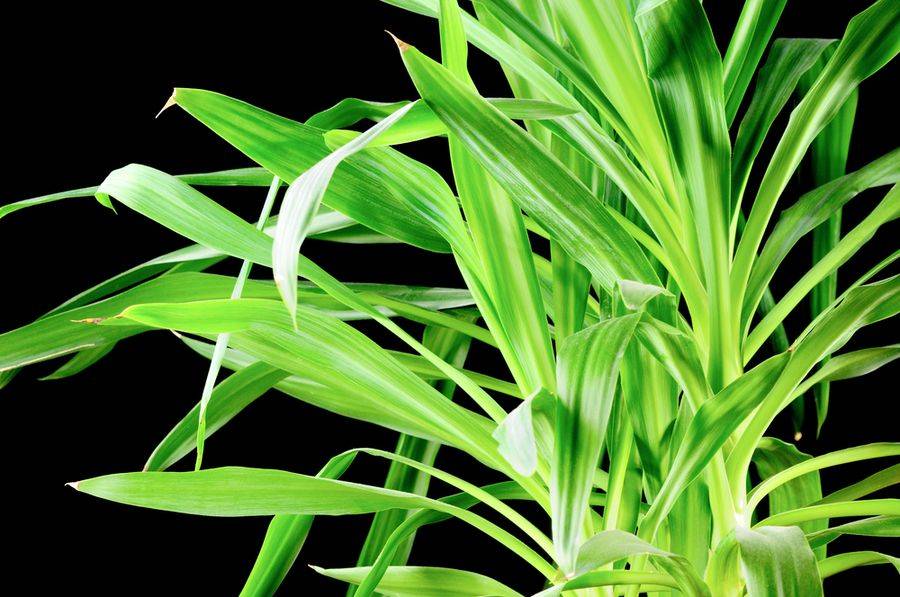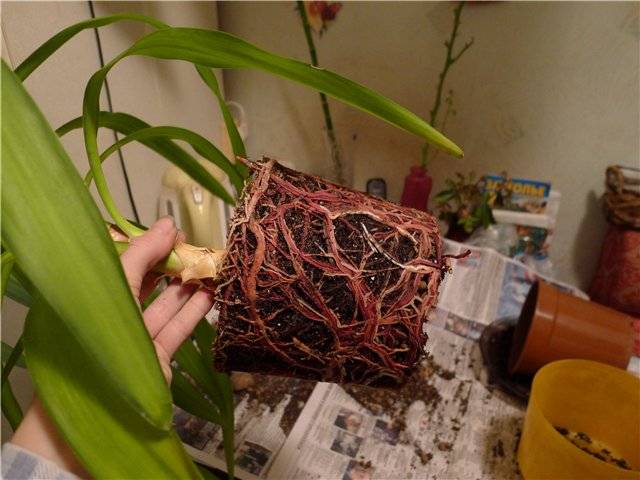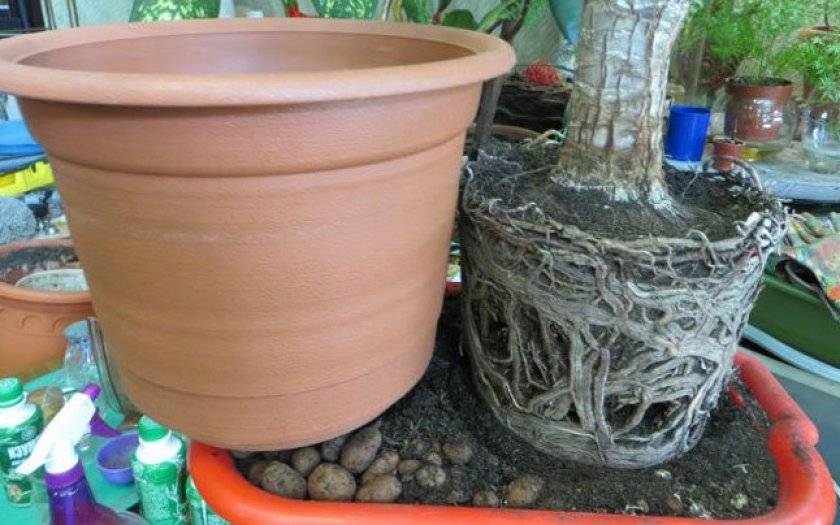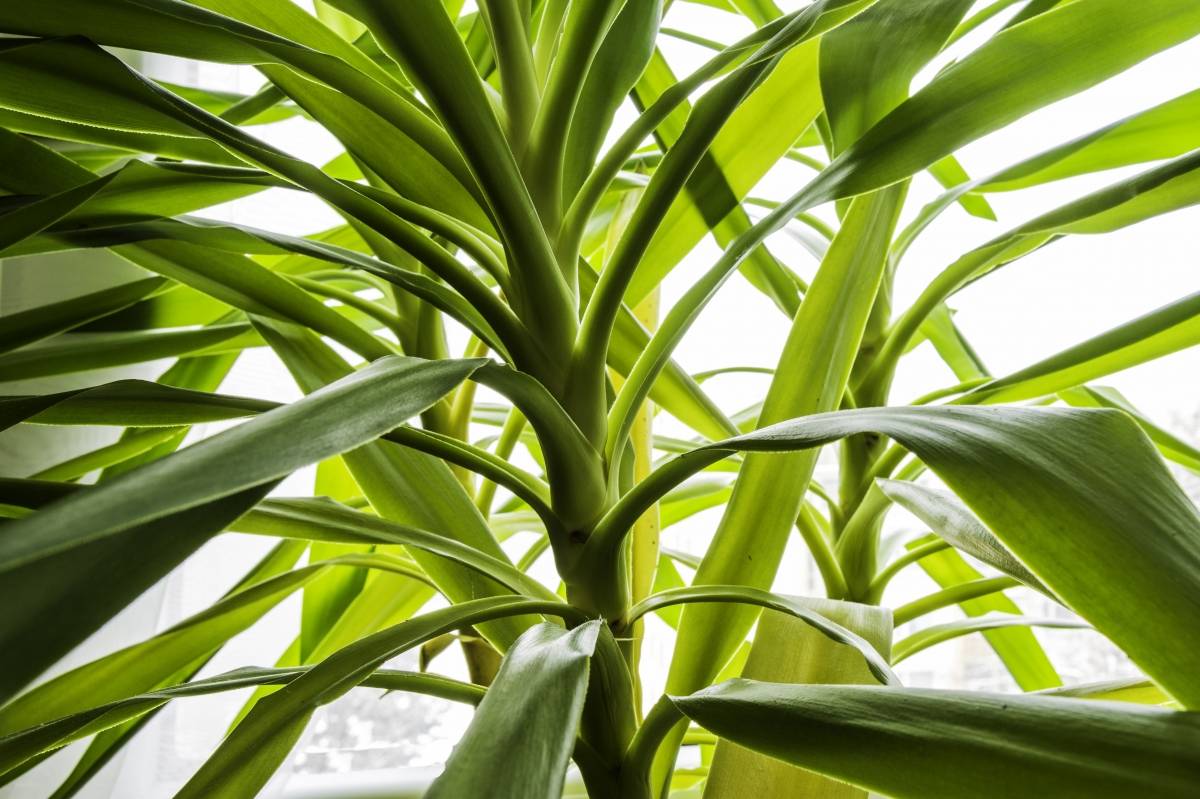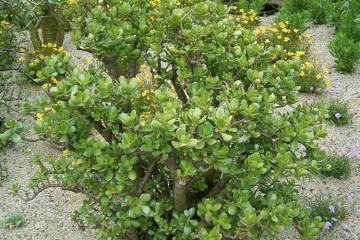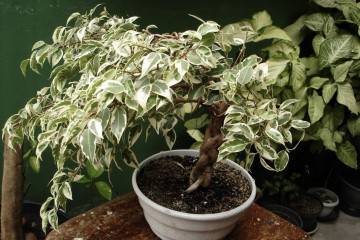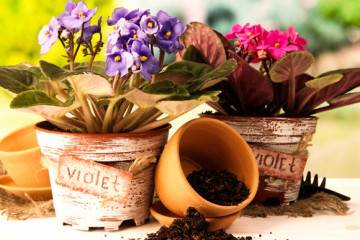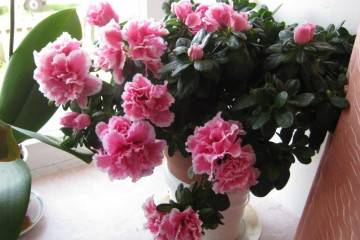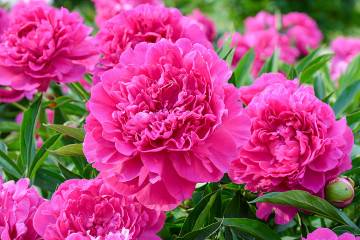How to transplant Yucca at home
Content:
A favorite of large rooms and bright halls, yucca is ready to decorate your home all year round. She is not picky, but some requirements in her care need to be taken into account. In particular, it is important to know how to transplant a yucca and properly care for it after this procedure.
When a transplant is needed
The yucca root system is very delicate and does not like waterlogging. The roots are not too thick, they do not grow densely. The spacious yucca pot has been filling for several years. A transplant of an adult, healthy plant is needed every three years.
But there are other reasons that influence when to transplant a yucca:
- After buying a flower at a flower shop. The purchased plant is planted in transport soil, which is devoid of nutrients. It also contains peat, which is compressed over time and ceases to allow water and air to pass through.
- When the roots have filled the whole pot. If the plant is in the active phase of growth, and the pot space has already ended and the roots "crawl" to the surface. In this case, an urgent yucca transplant is needed, as it can stop growing and shed the lower leaves. The more roots there are in the pot, the less nutrition there is.
- In case of illness. With the wrong watering regime, the yucca roots quickly rot. A signal of this disease is a sharp yellowing of the leaves. Rot is rapidly thrown onto the trunk, you need to quickly save the plant from excess moisture. The transplant will be one of the methods to combat the disease.
The best time to renew the soil of a plant is spring. After hibernation, the palm will appreciate the change in substrate, the addition of nutrition and new space. Any transplant is stressful for the plant. Therefore, if this procedure is not carried out according to plan, it is important to ensure good growth conditions.
How often to transplant Yucca
A not too hasty palm should be replanted as its root system and greenery grow.
Scheme of planned transplants according to the age of the plant:
- a year after rooting;
- at the age of two;
- at 4 years old;
- at 6 years old;
- at 9 years old.
After the six-year border, the flower is considered an adult. If the pot is correct and the palm does not get sick, the transplant is carried out every three years.
How to choose a pot and soil
A pot for a massive palm tree needs a suitable one. Ceramic, clay pots work best for yucca. Natural materials help to evenly distribute the temperature and dry out the soil. But even in a plastic pot, yucca will grow well.
Drainage is more important. The openings of the pot must be sufficient to allow excess liquid to drain around the entire bottom. The layer of expanded clay or shards itself is at least 3 cm.
The size of the pot is matched to the root system. Plus, there must still be room for the growth of new roots. With each transplant, the diameter of the new pot must be taken more by 2-3 cm.
The soil for yucca is sold already prepared. The pack will have an inscription “for palm trees” or “for dracaena”. This mixture can be lightened with sand, which will ensure the quickest possible drainage of excess moisture. The proportions for the mixture are 3 parts of sand to 7 parts of soil.
How to transplant a yucca and make a soil mixture at home. Should be taken in equal parts:
- sod land;
- sand;
- derain;
Add half of the compost for food.
Soil disinfection
They cultivate the soil from possible fungi. To do this, you can use:
- Oven and ignite the soil in it for 15 minutes. The soil is completely cooled before planting.
- Water bath and steam the substrate for 20 minutes. After steaming, the soil is dried.
- Fungicides. To use them, you need to follow the instructions.
After disinfecting the soil, experienced flower growers recommend feeding the soil. For this, ash, mustard powder, yeast or other feeds are added to the soil.
Preparing for transplant
The preparatory stages include not only the choice of the pot and soil. The flower should also be prepared for the "move":
- First of all - inspection for the presence of pests. If a flower is infected with parasites, they will gladly move to new living conditions. And they will begin to multiply even more actively. Therefore, inspection is the first thing. Struggle is the second.
- The condition of the flower is an important factor. Anything that will interfere with recovery after transplantation should be removed. And these are painful and yellowing leaves. Dry lower leaves.
- Any roots that are damaged during transplanting can rot and lead to disease. If in a dry state the lump cannot be removed from the pot, it should be thoroughly soaked. Take out slowly and as carefully as possible.
The place where the flower will stand after transplanting should be well lit, away from heating appliances. Any changes in temperature and drafts will interfere with the adaptation period.
Transplant methods
How to properly plant a yucca in a larger pot? The usual next transfer for a yucca is a transshipment. Plant roots should be minimally damaged. Any damage is treated with crushed coal.
If the transplant is carried out for the purpose of resuscitation, then you need to get rid of the old soil to the maximum. Otherwise, the fungus that lives in the old soil will migrate to a new pot.
Repotting after purchase should also be with maximum root release. The easiest way to wash off the soil is under running water. So, the roots will remain intact.
Care after plant transplant
After the procedure, the plant needs to be taken care of. It is important to keep an eye on the palm tree's appearance and respond to its signals. Conditions that are important after soil renewal:
- Temperature 20-25 ° C.
- Good lighting without direct sunlight.
- Lack of drafts.
- The first two days without watering. And if the transplant was in purchased soil, then the palm tree will cost two weeks without moisture.
- Water only with warm and settled water.
Two weeks after transplanting, you do not need to fertilize the flower. Its forces are directed to the growth and restoration of roots, but not to the growth of the green part.
Transferring from the shipping pot after purchase
The flower has gone through a change of scenery, lighting, care and growth conditions. It is important to let him get comfortable in a new place and not disturb the first 10-14 days. After that, a change of soil is simply necessary.
Transplant after purchase, step by step:
- The pot is placed in a container of water to soak off the old soil.
- Release an earthen lump from the pot.
- The old soil is completely removed under running water.
- If the roots are accidentally damaged, they are treated with crushed coal.
- The new pot needs to be taken a little more than the old one.
- A layer of expanded clay drainage is at least 3 cm. Next is a layer of earth.
- Next, you should install the plant in a pot, distribute the root system and carefully sprinkle it with earth.
- Leave the root collar at the same level without deepening.
You need to choose a place where a new phyto-friend will stand in advance.The yucca does not like frequent rearrangements, and it may turn yellow.
Typical transplant errors
Major mistakes when changing soil:
- transplanting in winter when the plant is sleeping;
- waterlogging of the soil;
- root damage without treatment;
- removal of old soil during transshipment;
- little light or direct sunlight during adaptation.
Yucca is a beautiful palm tree. Her care consists of the usual requirements of indoor flowers - light, warmth and moisture. And the beauty of its greenery pays off hundreds of times. It will be very useful to learn the simple rules for transplanting this Mexican beauty. And the evergreen bush will delight its grower for many years.
